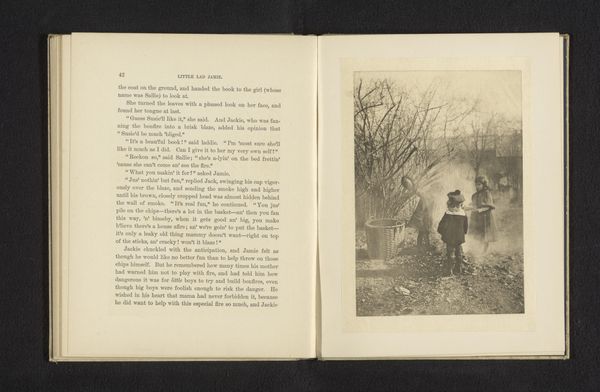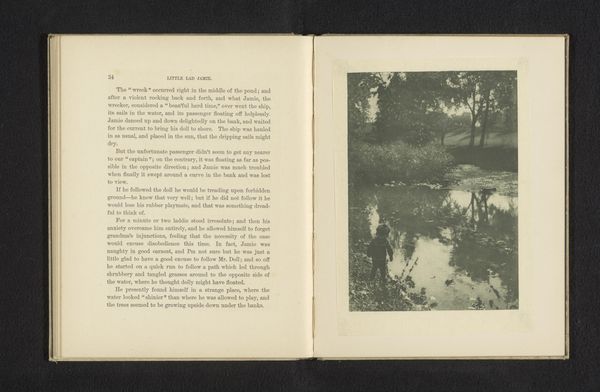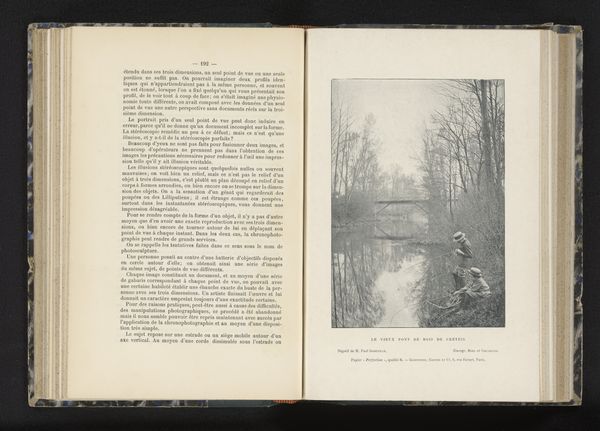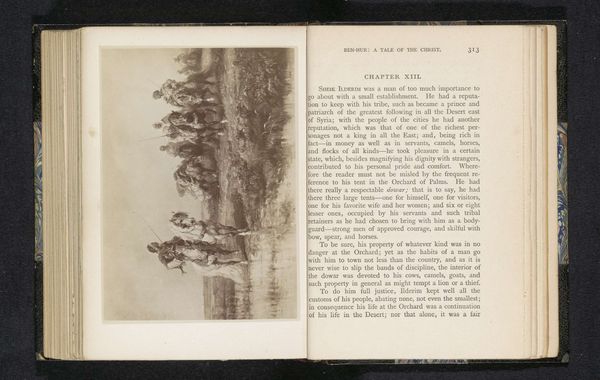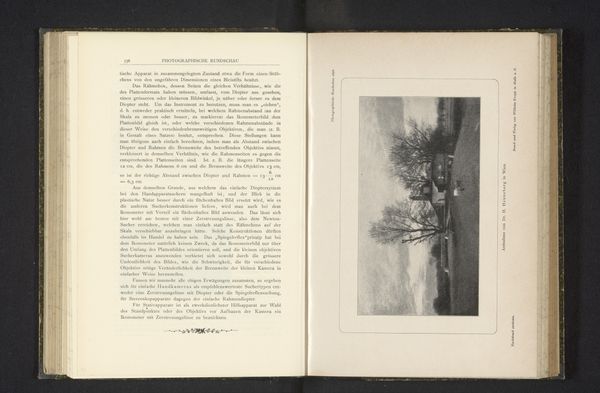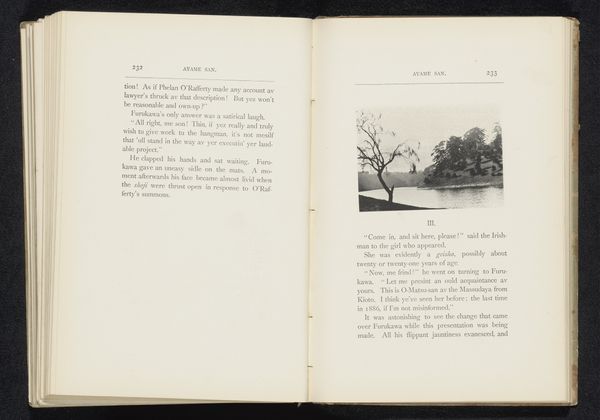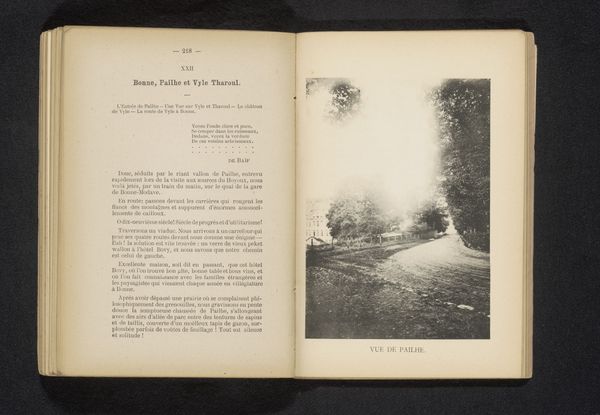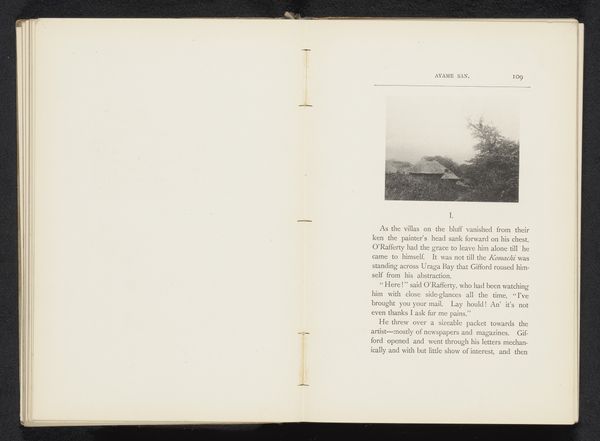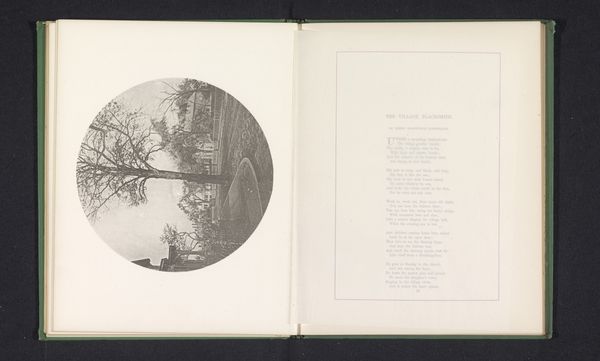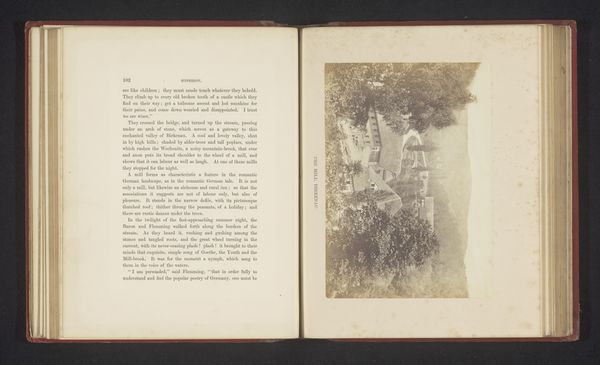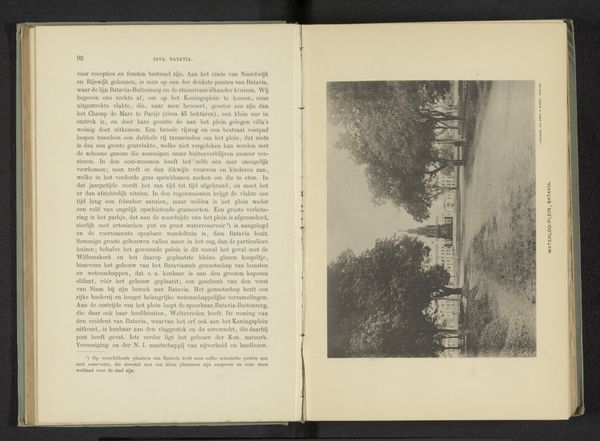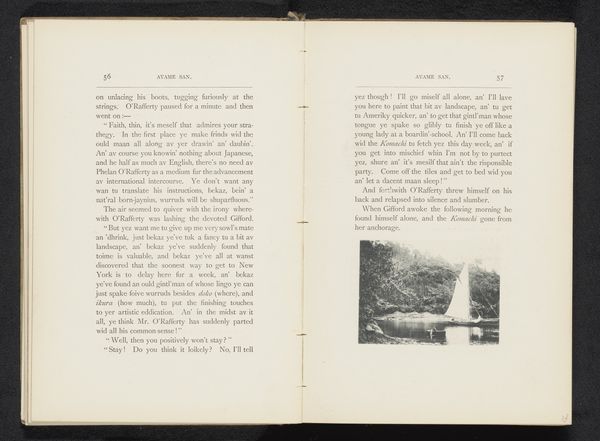
print, photography
#
portrait
# print
#
landscape
#
photography
#
genre-painting
Dimensions: height 165 mm, width 117 mm
Copyright: Rijks Museum: Open Domain
Curator: Before us is "Boy by a Pond with a Small Boat," a photograph created before 1895 by Emma Justine Farnsworth. The print captures a seemingly serene, almost dreamlike, scene. What are your initial impressions? Editor: The photograph has a certain somber beauty. The limited tonal range, almost monochromatic, evokes a feeling of melancholy, a quiet reflection on childhood and nature. There’s a sense of solitude, perhaps even isolation, embodied in the figure of the boy and his small craft. Curator: Farnsworth, as a photographer, was navigating late 19th-century artistic currents that grappled with gender roles. Women of that era faced constraints in the professional art world; yet, photography allowed them to explore creative expression and navigate identity, family, and the politics of the everyday. The subject of childhood can then be regarded not as a benign theme, but a deliberate emphasis on how future generations may disrupt patriarchy. Editor: That is a useful positioning. Visually, there's an interesting contrast in this piece. We see a boy—symbolically positioned on the threshold of adulthood—accompanied by the boat in water, long understood to signal the subconscious. Given the broader implications you mention, could that mean something here? Is the photograph referencing a suppressed psychological dimension to children of that era? Curator: Potentially. If so, Farnsworth pushes viewers to contemplate themes of autonomy, identity, and agency. Consider that, in the picture, the sailboat is positioned, seemingly ready to embark on a voyage. As viewers, we should be sensitive to this detail; after all, water has multiple cultural associations beyond psychoanalysis, representing cleansing and freedom from the bondage of previous generations. Editor: I hadn’t considered the boat in those terms. I had been focusing on how it acts almost like a tiny echo of the boy himself, reflecting his ambition to navigate the uncertain waters of the world. And by photographing that interaction between boy and boat, and boy and nature, Farnsworth invites viewers to interpret how we can understand cultural memory and the passage of time through our inherited symbols. Curator: Perhaps what stands out most for me is how a seemingly quaint, representational scene like this opens up wider discourses surrounding gender, identity, and politics. It is a reminder that visuality is never neutral; art holds power. Editor: A subtle but powerful reminder. Farnsworth challenges us to contemplate the visual languages and values that shape our perception of seemingly mundane moments.
Comments
No comments
Be the first to comment and join the conversation on the ultimate creative platform.
